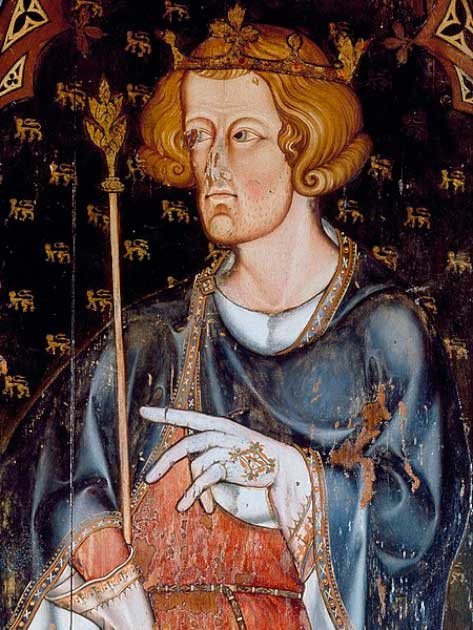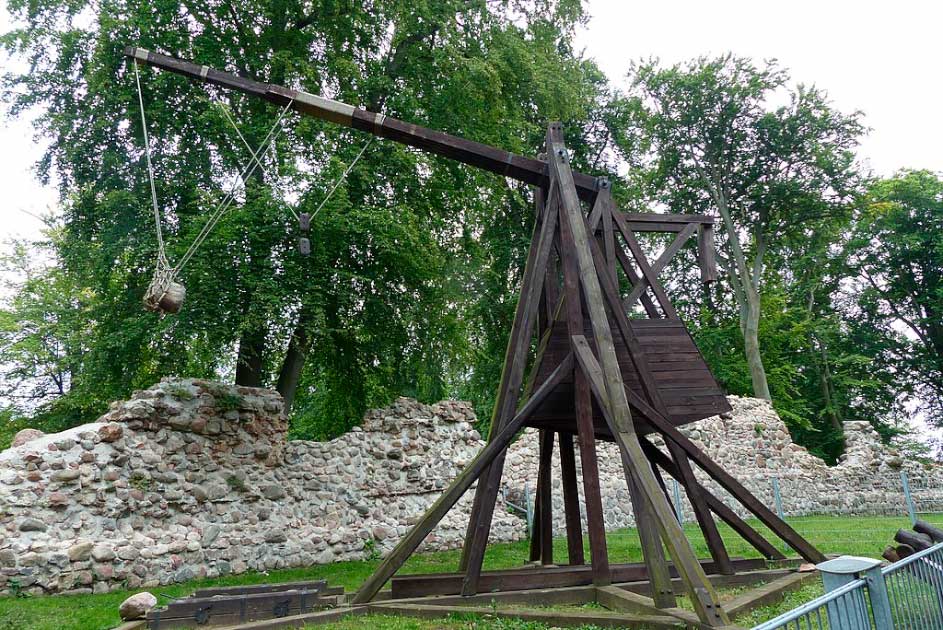The 20th century has seen the creation of some of the largest and deadliest weapons of war. Nuclear weapons have levelled entire cities, and Hitler’s wunderwaffe brought London to its knees in the Second World War.
But for all the destructive potential unleashed by the last hundred years, earlier weapons should not be forgotten. One such is Edward I’s Warwolf, a 13th-century weapon whose size alone was enough to strike fear in the enemies’ hearts.
This beast was built for utter destruction and is said to have been effectively used. But what was Edward I’s Warwolf, and was it really necessary?
The Hammer of the Scots
Edward I, also referred to as Edward Longshanks and the Hammer of the Scots (Malleus Scotorum), was the King of England from 1272 to 1307. Edward I of England had a terrible temper, and with his 6’2ft (1.88m) height, he was an imposing presence, often feared by others. While he appeared intimidating, he was also a religious man known for charity towards the church, just like his subjects.
Edward I, King of England, was so devoted to his religion that he joined the crusade to gain control of the Holy Land from the Turks. His crusade was the final crusade that reached the Holy Land. Officially there are eight crusades, but Edward I’s quest is seen as an extension of the Eighth Crusade. Edward I’s journey is often called “The Ninth Crusade”.
Edward I accomplished many other things during his reign. Almost immediately after his ascension to the throne, Edward I restored and re-established royal authority in the wake of the damage caused to the crown during his father’s, King Henry III, utterly disastrous reign.

Edward I solidified Parliament as a lasting institution and developed a practical process for raising taxes. He waged a full-scale war with Wales lasting from 1282 to 1283. Following the success of the capture of much of Wales, Edward focused on conquering Scotland. He also issued the Edict of Expulsion, which banned the Jews from England in 1290. This edict lasted almost four hundred years until 1657 when it was overturned by Oliver Cromwell.
- The Secret of Greek Fire: A Dark Age Flamethrower?
- The Nazi V-3 Cannon: Could this “Vengeance” Weapon Have Destroyed London?
The relationship between England and Scotland was incredibly complicated at the time. The new Queen of Scotland was crowned at three years old, though advisors would control the kingdom until she was old enough to ascend. She was arranged to marry Edward I’s son, but the young queen died at the age of seven.
Due to fighting over who would be appointed the new king to succeed this child queen, the Scottish regents asked Edward I to help pick a new king. Edward wanted to control Scotland and declared that if he were recognized as the overlord of Scotland, he would choose a new king (who would have no power).
The Scots refused to submit to Edward I, so he chose a new king but still pushed his authority over Scotland. The Scottish king refused when Edward I demanded that the King of Scotland give him their army to fight against France. The King of Scotland then joined an alliance with the French against the English. This was the beginning of the Scottish War of Independence in 1296.
A Hammer Blow
Edward I earned his nickname, The Hammer of the Scots, due to his ruthless and very successful attacks against the Scots during the Scottish War of Independence. England was winning battle after battle against the Scottish Army, and by 1304 Edward I set his sights on the Scottish stronghold of Stirling Castle.
The castle was one of the last Scottish fortresses that had yet to surrender to England. Edward wanted to destroy it and the Scottish resistance in a show of strength.
The English laid siege to the castle with the help of twelve siege engines (either catapults or the more sophisticated and longer range trebuchets). For four long months, the castle and its walls were hit by heavy lead balls, as well as ceramic balls filled with explosives.

They also launched any large stone in the vicinity of the castle towards its walls. But Edward I became tired of the current attack methods and lack of progress and demanded a bigger, terrifying, and more destructive trebuchet be built to crush Stirling Castle.
The Warwolf
Edward I wanted to have the largest trebuchet and ordered five master carpenters and 50 laborers to build the beast. It took three months to make, and the parts had to be carried to the site by 30 wagons. Edward I’s Warwolf (also called War Wolf, Loup de Guerre, and the Ludgar) stood outside Stirling Castle, ready for its first use.
- Archimedes’s Weapons of War: Embellished Stories or Deadly Devices?
- The Hewitt-Sperry Automatic Airplane: The First Cruise Missile?
In Stirling Castle, 30 Scottish men led by William Oliphant saw Edward I’s Warwolf being put together. Before the Warwolf was fully assembled, the Scottish inside Stirling Castle surrendered. The Scottish in the castle became so frightened when they considered the scale of damage a trebuchet of that size would do.
The men chose to surrender rather than face their destruction at the hands of the Warwolf. On the other hand, Edward I was not going to let the three months it took to build the largest trebuchet in history go to waste. He sent the surrendered men back into the castle, exclaiming, “You do not deserve any grace, but must surrender to my will.”

Edward I refused to honor the surrender at Stirling Castle. According to some historical accounts, he would not accept the Scottish men’s surrender until he hit Stirling Castle with the massive Warwolf: obviously the king was keen to see the impact of his new weapon. The Scottish men were forced back into the castle and were left to defend themselves in any way against the attack. Sources say that once the Warwolf was thoroughly tested (smashing a wall of the castle), the surrender was honored, and the Scots left alive in the castle were quickly imprisoned.
Truly Massive
Edward I’s Warwolf was said to be the largest trebuchet ever constructed, and it lived up to that claim. It has been estimated that its height was between 300 to 400ft (90-120m). This massive trebuchet claimed to be able to launch projectiles at speeds of 120mph (190km/h). The size of those projectiles would have been 300lbs (135kg) and the weapon was capable of hitting a target 218 yards (200 meters) away.
The Warwolf was terrifying, massive, and could apparently knock down castle walls with ease, but there is no proof that Edward I’s Warwolf was actually used or that it was a success. There is a possibility an oversized trebuchet was created at the behest of Edward I, and it was used at the successful Siege of Stirling Castle.
The only information historians know comes from old Latin texts claiming to be the account of the siege. There are the writings of others long after the death of Edward I as well. There was certainly a surrender of the Scots in the castle, and although it may not have been due to fear of Edward I’s Warwolf. whether the Warwolf existed, nothing remains today to confirm it but the stories of long ago.
Top Image: Trebuchets were known in siege warfare of the time, but nothing was as large as Edward I’s Warwolf. Source: British Library / Public Domain.
By Lauren Dillon